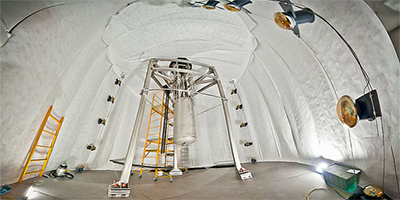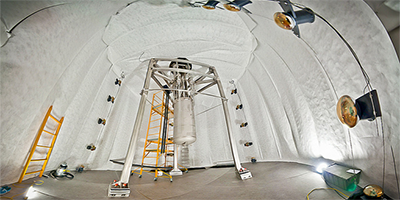How to Spot a WIMP
Weakly interacting massive particles (WIMPs) are among the leading candidates for dark matter. Experimentalists around the world are searching for the particles in deep underground laboratories, hoping to see WIMPs as they collide with the atoms of a detector, producing nuclear recoils. But a challenge is discriminating a dark matter signal from similar background signals produced by neutrons, neutrinos, and other particles. A comparison of different detection strategies by Julien Billard at the Institute of Nuclear Physics of the University of Lyon, France, highlights those that have the best chance of spotting the elusive particles.
Billard analyzed the three key observables that can be accessed when a WIMP collides with a detector: the number of recoiling particles, their energy, and their direction of travel. The latter can be a powerful signature of WIMPs: as the solar system orbits around the center of the Milky Way, it passes through the dark matter halo thought to be present in our Galaxy, creating a dark matter “wind” with a specific direction. For different detector configurations and background scenarios, Billard calculated how many WIMP-recoil events are needed to yield an unambiguous signal. He found that, in many cases, energy-resolved detection could yield a reliable signal with up to 1000 fewer recoils than required by strategies that only count events. A more modest boost comes from constraining the incoming direction of the dark matter particle. Dark matter detectors will soon become so sensitive that neutrinos from the sun, the atmosphere, or supernovae will generate a substantial background. According to Billard, being able to discriminate the number, energy, and direction of a possible dark matter event will therefore be crucial for claiming a discovery.
This research is published in Physical Review D.
–Matteo Rini





